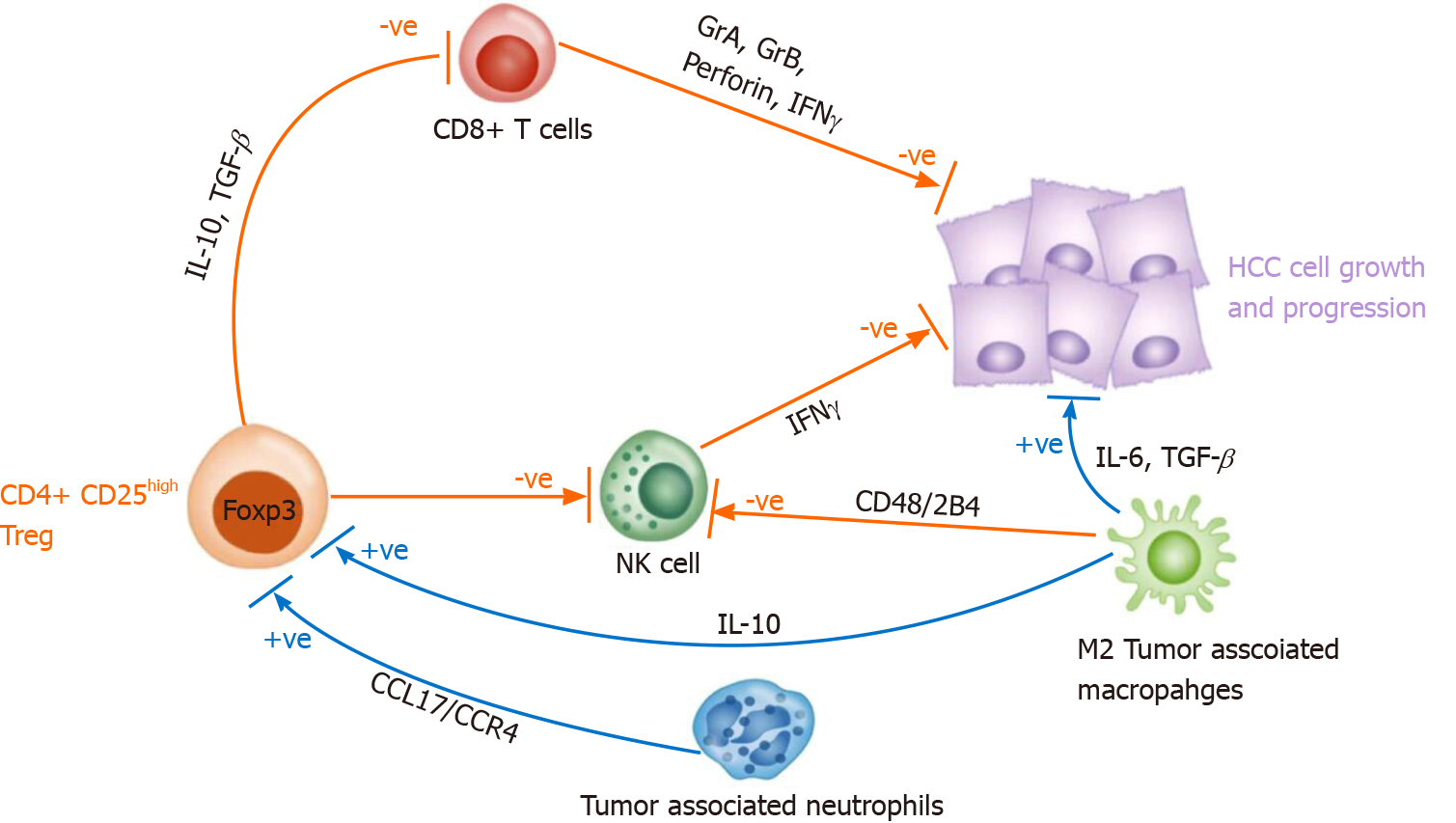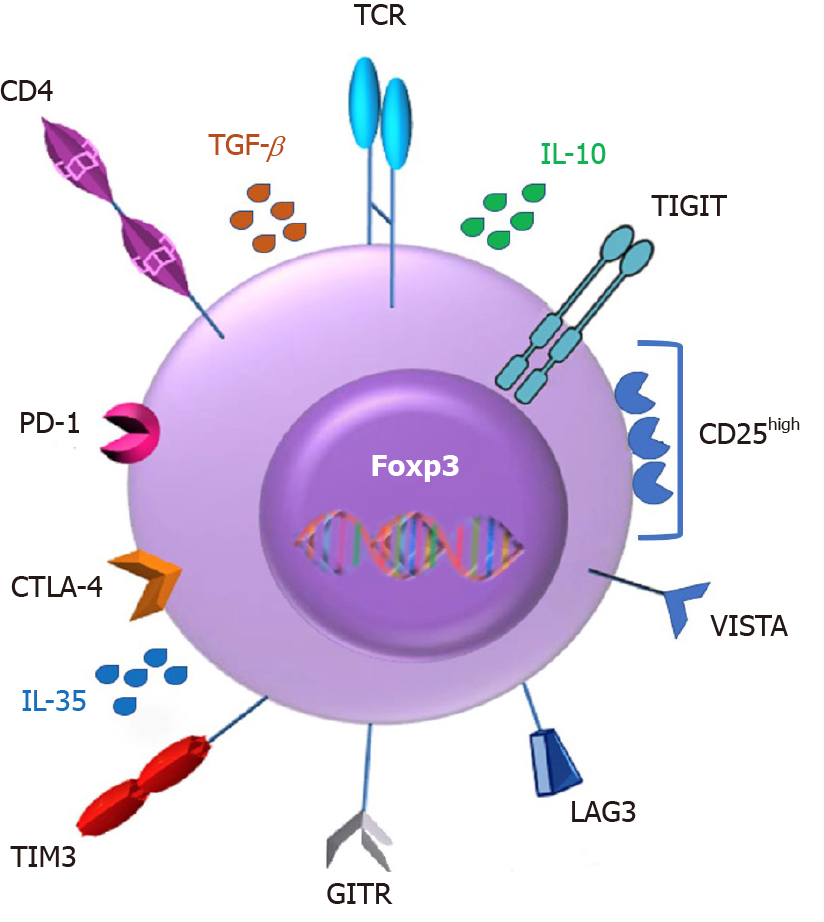Copyright
©The Author(s) 2021.
World J Gastroenterol. Jun 14, 2021; 27(22): 2994-3009
Published online Jun 14, 2021. doi: 10.3748/wjg.v27.i22.2994
Published online Jun 14, 2021. doi: 10.3748/wjg.v27.i22.2994
Figure 1 The hepatocellular carcinoma liver microenvironment is characterized by a large population of immune cells.
Natural killer and CD8+ T cells exert antitumor effect by secreting interferon-γ, granzyme A, granzyme B and perforin, however they are mostly defective since these cells are suppressed by CD4+ CD25 regulatory T cell (Tregs). Additionally, tumor associated neutrophils (by secreting CCL17 and CCR4) and M2 tumor associated macrophages (by secreting interleukin-10) can induce CD4+ CD25+ Tregs thus supporting tumor growth and progression. NK: Natural killer; Treg: Regulatory T cell; IL: Interleukin; TGF-β: Transforming growth factor β; IFN: Interferon; HCC: Hepatocellular carcinoma.
Figure 2 Regulatory T cells are recognized as CD4+CD25high positive and Foxp3+ expressing cells.
They feature a range of other phenotypic markers such as T-cell immunoreceptor with Ig and ITIM domains, glucocorticoid-induced tumor necrosis factor receptor-related protein, cytotoxic T lymphocyte-associated antigen 4, programmed cell-death 1 receptor, V-domain Ig suppressor of T cell activation, lymphocyte activation gene-3, T cell immunoglobulin mucin 3. Upon activation, Tregs release the inhibitory cytokines interleukin (IL)-10, transforming growth factor β and IL-35. TCR: T-cell receptor; IL: Interleukin; TGF-β: Transforming growth factor β; TIGIT: T-cell immunoreceptor with Ig and ITIM domains; VISTA: V-domain Ig suppressor of T cell activation; LAG3: Lymphocyte activation gene-3; GITR: Glucocorticoid-induced tumor necrosis factor receptor-related protein; TIM3: T cell immunoglobulin mucin 3; CTLA-4: Cytotoxic T lymphocyte-associated antigen 4; PD-1: Programmed cell-death 1 receptor.
Figure 3 Distinct targeting of regulatory T cell activating and inhibitory receptor-targeted therapies in cancer and autoimmunity.
Regulatory T cell (Treg) cells are equipped with a repertoire of activating and inhibitory receptors. For successful therapy of tumors and chronic infections, blockade of activating receptors and/or stimulation of inhibitory receptors shifts the balance toward inhibition of Tregs. In contrast, to achieve Treg activation in autoimmune diseases, blockade of inhibitory receptors and/or stimulation of activating receptors may be desirable. Treg: Regulatory T cell.
- Citation: Granito A, Muratori L, Lalanne C, Quarneti C, Ferri S, Guidi M, Lenzi M, Muratori P. Hepatocellular carcinoma in viral and autoimmune liver diseases: Role of CD4+ CD25+ Foxp3+ regulatory T cells in the immune microenvironment. World J Gastroenterol 2021; 27(22): 2994-3009
- URL: https://www.wjgnet.com/1007-9327/full/v27/i22/2994.htm
- DOI: https://dx.doi.org/10.3748/wjg.v27.i22.2994











